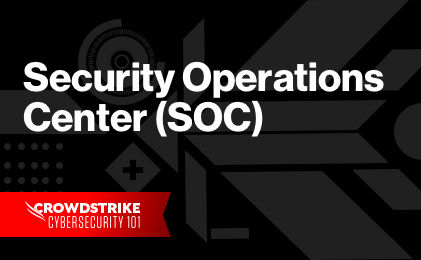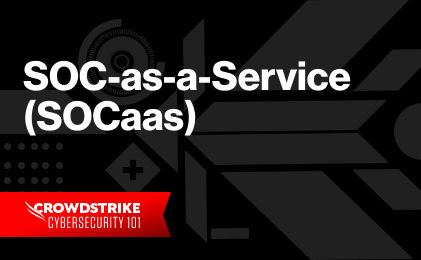Transform SOC with Next-Gen SIEM
Transform SOC with Next-Gen SIEM
Within the context of cybersecurity, SOC refers to a security operations center. This SOC stands apart from the commonly known acronym for systems and organization controls. The security operations center is the nerve center of an organization’s cybersecurity operations, where experts monitor, analyze, and defend against cybersecurity threats.
SOC reports are essential for your organization. They distill complex security data into actionable intelligence, keeping you ahead of threats. In the ongoing battle against today’s modern threats, SOC reports are your crucial briefings.
As we explore the concept of SOC reports, let’s begin by breaking down what a SOC actually is.
What is a security operations center?
A SOC is not just a team but a facility where IT professionals monitor an organization's security stance. Through the conjunction of expert security personnel, cutting-edge technology, and systematic methodologies, the SOC guards an organization against security threats.
The architecture of a SOC, often described as a “hub and spoke” system, is integral to its functionality. In this architecture, critical data is centralized in a repository, serving as the information hub that processes and correlates the security data flowing in from various sources. The hub's centralized nature provides a comprehensive perspective on threat data and intelligence, creating an efficient environment for prompt analysis and action.
The “spokes” in a SOC represent the diverse activities and responsibilities that a SOC handles, from implementing preventive measures to generating detailed reports and ensuring compliance with regulatory standards.
The SOC’s many critical functions and responsibilities include:
- Continuous monitoring of endpoint activity, network traffic, and system logs to be on the lookout for unusual or unauthorized activity.
- Incident response that is swift to mitigate the impact of security incidents.
- Proactive threat hunting to find threats and risks before they can materialize.
- Security analysis through the interpretation of data, with alerts to distinguish potential threats from benign activities.
- Compliance management to ensure the organization complies with corporate, regional, or industry-specific requirements and regulations.
- Threat intelligence that gathers and analyzes information about emerging threats to bolster a proactive defense posture.
Collectively, these activities form the backbone of a robust cybersecurity defense strategy.
What is a SOC report?
A SOC report in cybersecurity is a comprehensive document that details the activities and state of an organization's cybersecurity posture. This discussion should not be confused with SOC-1 or SOC-2 reports, which are related to financial reporting and internal controls over financial reporting.
SOC reports are vital for an ongoing assessment of security operations, and they serve many different purposes, including:
- Providing insights into potential security threats
- Documenting incidents
- Tracking the effectiveness of the SOC team's efforts.
Cybersecurity professionals within the SOC craft these SOC reports. The audience of these reports can range from board members and C-suite executives — who only require a high-level overview — to IT specialists who need the nitty-gritty details to maintain and enhance the security infrastructure.
SOC reports come in different types, with each serving a distinct function:
- Real-time monitoring reports deliver a current view of overall environment health and potential threats.
- Incident reports provide a detailed account of security incidents, their handling, and outcomes.
- Trend analysis reports offer insights into long-term security trends, aiding in strategic planning.
A SOC report includes several key components:
- Timestamps and time ranges ensure incidents and data points can be correlated for tracking and historical analysis.
- Metrics and key performance indicators (KPIs) provide quantitative data to help measure the performance and effectiveness of the SOC.
- Incident summaries recap security events for quick reference and decision-making.
Now that we’ve laid out what SOC reports are, let’s shift our focus to why they’re important.
Learn More
Watch our on-demand webcast to understand how to leverage automations and workflows with the Falcon platform to increase efficiency and reduce mean time to respond.
CrowdCast: Accelerate your SOC's Response Time with CrowdStrike
Importance of SOC reports
SOC reports are an essential part of the risk management strategy of any organization. As an organization uses the SOC report to capture the nuances of threat patterns and incident responses, decision-makers are empowered with critical information to assess the potential impact of security vulnerabilities on the business.
By taking a proactive approach to risk analysis, organizations can allocate their resources more effectively. They can also enact protective measures before breaches occur.
In addition, SOC reports play a pivotal role in meeting compliance requirements. As the cybersecurity landscape evolves, government and industry regulations are tightening. SOC reports provide a clear trail of information to validate how an organization adheres to security protocols and regulatory requirements.
Because SOC reports document an organization’s defensive measures and response tactics, they are instrumental in audits for demonstrating compliance. This validation is vital for avoiding financial penalties or damaged business reputation.
Lastly, SOC reports also help to ensure business continuity. When even minor service interruptions can lead to significant operational (and financial) setbacks, SOC reports offer insights into past security incidents and recovery timelines. Businesses can use this critical information to craft a resilient business continuity plan, designing strategies to minimize downtime and maintain service availability when security incidents arise. Put simply, SOC reports help keep the business machine running smoothly.
Best practices in generating and consuming SOC reports
When it comes to generating and consuming SOC reports, adopting certain best practices can significantly enhance their usefulness and impact. The following best practices will help your organization better understand the cyber threat landscape and make informed decisions to strengthen its security posture.
- Generate reports with appropriate frequency. Consider your organization’s size, complexity, and threat environment. Based on this information, determine the optimal interval for report generation, whether it’s daily, weekly, or monthly. Regular reporting (rather than ad hoc or as needed) will help keep stakeholders informed and ensure timely responses to new threats.
- Identify false positives and false negatives. Develop a process to effectively discern and filter out false alarms, or adopt cybersecurity tools that help eliminate noise and alert fatigue. False alerts can waste valuable resources, and alert fatigue can lead to real threats going unnoticed.
- Tailor reporting for different audiences. Customize the depth and detail of reports according to the needs of various audiences and stakeholders. For example, a CTO may require in-depth technical details. Meanwhile, board members may prefer high-level overviews of your SOC status and security posture.

2023 Threat Hunting Report
In the 2023 Threat Hunting Report, CrowdStrike’s Counter Adversary Operations team exposes the latest adversary tradecraft and provides knowledge and insights to help stop breaches.
Download NowDiscover the world’s leading AI-native platform for next-gen SIEM and log management
Elevate your cybersecurity with the CrowdStrike Falcon® platform, the premier AI-native platform for SIEM and log management. Experience security logging at a petabyte scale, choosing between cloud-native or self-hosted deployment options. Log your data with a powerful, index-free architecture, without bottlenecks, allowing threat hunting with over 1 PB of data ingestion per day. Ensure real-time search capabilities to outpace adversaries, achieving sub-second latency for complex queries. Benefit from 360-degree visibility, consolidating data to break down silos and enabling security, IT, and DevOps teams to hunt threats, monitor performance, and ensure compliance seamlessly across 3 billion events in less than 1 second.





